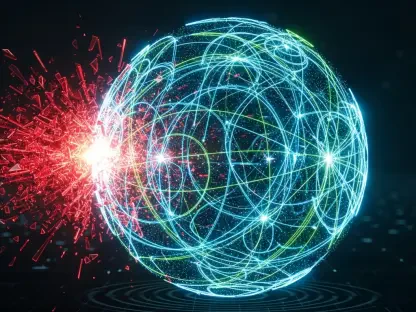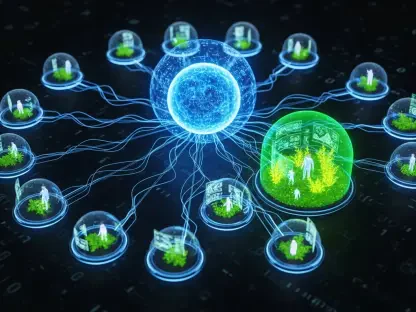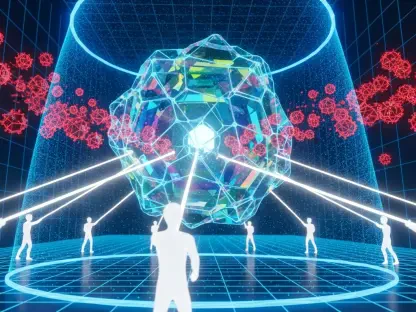Imagine a world where blockchain networks, often isolated and fragmented, operate as seamlessly as the internet itself, allowing users to interact across platforms without barriers or delays, making the vision of a unified digital ecosystem no longer a distant dream but a tangible goal. Thanks to innovative solutions emerging in the decentralized finance (DeFi) and Web3 space, this vision is becoming reality. One of the most promising developments comes from Polygon, a key player in blockchain scalability, which is now pivoting toward a broader mission of interconnectivity. Through its ambitious AggLayer initiative, Polygon aims to bridge the gaps between disparate blockchain networks, fostering an environment where Layer 1s (L1s), Layer 2s (L2s), and other chains can coexist and collaborate without compromising their unique strengths. This article explores how this coordination layer could redefine the blockchain landscape, addressing longstanding challenges like fragmentation and poor user experience while paving the way for scalable, interoperable systems that could transform global finance and beyond.
Bridging the Fragmentation Gap
The blockchain industry, despite its rapid growth, continues to grapple with a significant hurdle: fragmentation. With countless networks operating independently, users often face cumbersome processes when moving assets or data across chains, leading to inefficiencies and a disjointed experience. Polygon’s AggLayer emerges as a potential solution to this pervasive issue by acting as a coordination layer that connects various blockchain ecosystems. Unlike traditional approaches that might force chains to sacrifice sovereignty or liquidity, this innovative framework ensures that each network retains its autonomy while enabling seamless cross-chain interactions. The goal is to create an internet-like experience where users can navigate between platforms effortlessly, unaware of the underlying complexities. By prioritizing interoperability, AggLayer addresses a critical pain point, setting the stage for a more cohesive Web3 environment that could drive mainstream adoption of blockchain technology.
Another vital aspect of AggLayer’s approach to unification lies in its ability to preserve the unique characteristics of individual chains while fostering collaboration. For developers and projects, this means the freedom to build on preferred networks without worrying about isolation from broader ecosystems. The coordination layer facilitates the flow of data and value across L1s and L2s, ensuring that liquidity remains accessible and usable regardless of the originating chain. This interconnectedness is not just a technical achievement but a strategic one, as it encourages innovation by lowering barriers to entry for new projects. As blockchain technology evolves, the ability to operate within a unified yet diverse ecosystem could become a defining factor for success. AggLayer’s focus on reducing friction in cross-chain operations positions it as a cornerstone for future developments, potentially reshaping how decentralized systems interact and grow over time.
Scaling for a Global Financial Future
Scalability remains a cornerstone of blockchain’s potential to revolutionize global finance, and Polygon is doubling down on this through AggLayer and related initiatives. The network’s roadmap includes ambitious targets, such as achieving a throughput of 100,000 transactions per second (TPS) via its “gigagas roadmap.” This level of performance would position Polygon as a leading infrastructure for on-chain financial systems, capable of handling the demands of real-world applications at scale. AggLayer plays a pivotal role here by ensuring that scalability does not come at the expense of interoperability. By integrating various chains into a unified framework, it allows the combined strength of multiple networks to support high transaction volumes, reducing bottlenecks and enhancing efficiency. Recent upgrades, like improvements to transaction finality times, already demonstrate progress, with stablecoin and tokenized asset transfers becoming faster and more reliable for users worldwide.
Beyond raw performance metrics, the implications of AggLayer’s scalability efforts extend to practical, everyday use cases that could drive broader adoption. Partnerships with major platforms have already showcased the potential for real-world integration, such as enabling crypto-based payments in select regions. These collaborations highlight how a unified blockchain ecosystem can bridge the gap between digital assets and daily transactions, making decentralized solutions accessible to a wider audience. For traders and end-users, this translates to cheaper, quicker, and more dependable transactions, which are essential for building trust in blockchain technology. Additionally, the transition from the MATIC token to POL introduces expanded utility, including staking rewards and access to ecosystem incentives, further aligning user interests with network growth. AggLayer’s role in tying these elements together ensures that scalability serves not just technical goals but also tangible improvements in user experience and financial inclusion.
Driving User-Centric Innovation
A key strength of AggLayer lies in its commitment to enhancing the user experience, a factor often overlooked in the race for technical superiority in blockchain development. By creating a seamless interface across diverse networks, this coordination layer aims to simplify the complexities of Web3 for everyday users. Navigating multiple chains or understanding intricate protocols can be daunting for newcomers, but AggLayer’s design focuses on abstracting these challenges, offering a fluid, intuitive interaction with decentralized systems. This user-centric approach could be transformative, as it lowers the learning curve and makes blockchain technology more approachable. Whether it’s transferring assets, engaging with DeFi protocols, or accessing tokenized real-world assets (RWAs), the streamlined experience enabled by AggLayer could encourage mass adoption, bringing decentralized solutions into the mainstream.
Equally important is how AggLayer supports ecosystem growth through incentives and community engagement. The POL token, central to Polygon’s evolving framework, offers holders value through staking rewards and access to airdrops from projects within the ecosystem. This mechanism not only incentivizes participation but also fosters a sense of shared progress among users and developers. Projects building on AggLayer benefit from exposure to a wider network, gaining access to liquidity and user bases across connected chains. Such dynamics create a virtuous cycle of innovation and adoption, where user-friendly improvements drive engagement, and increased engagement fuels further development. By balancing technical advancements with practical benefits, AggLayer stands out as a solution that prioritizes the needs of its community, ensuring that unification efforts translate into real-world value for all stakeholders in the blockchain space.
Reflecting on a Unified Path Forward
Looking back, Polygon’s journey through the AggLayer initiative marked a pivotal moment in addressing the blockchain industry’s fragmentation challenges. The coordination layer’s ability to connect disparate networks while preserving their sovereignty demonstrated a balanced approach to interoperability. Its focus on scalability, evidenced by ambitious transaction throughput goals, underscored a commitment to meeting the demands of a global financial landscape. Meanwhile, user-centric innovations ensured that technical progress did not overshadow the importance of accessibility and ease of use. As the ecosystem evolved, the transition to POL and strategic partnerships highlighted how interconnected systems could drive practical applications, from daily transactions to tokenized assets. Moving forward, the lessons from these efforts suggest a need for continued emphasis on seamless integration and community incentives. Exploring ways to further simplify cross-chain interactions and expand real-world use cases will be crucial steps in solidifying a unified blockchain future.









